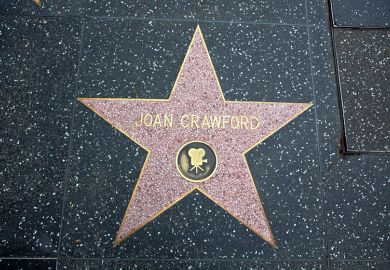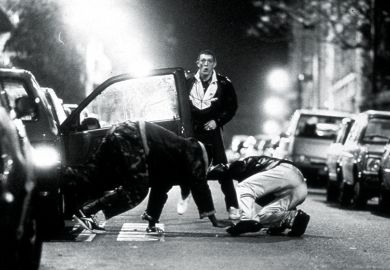A month ago, I took some of my postgraduate students to Tate Modern’s screening of Christian Marclay’s 24-hour opus, The Clock (2010). This is an experimental piece consisting entirely of sequences from films that, quite simply, feature clocks of all shapes and forms. The continuous and mesmerising spectacle of Marclay’s montage film is that it adopts the real-time rhythm of a 24-hour clock and, therefore, when we see Orson Welles impaled on a clock tower at the end of his classic noir film The Stranger (1946), it heralds midnight on and off screen.
Not all my students knew how to respond to such archival meddling; a relentless montage of clock-oriented scenes requires viewers to stop waiting for the narrative to unfold and, above all, to look at the medium itself as duration. The revelation, as Marclay makes apparent, is that cinema is time; it is everywhere in the history of film.
Catherine Russell’s excellent book Archiveology opens up yet more rich and very pertinent questions relating to film-making as an archival practice in which themes of time, memory and imagination are fluidly interwoven and fleshed out as new cinematic experiences. Just as Marclay employs the ghosts of old movies to make a new film, Russell examines the “recycling, appropriation, and borrowing of archival sounds and images by filmmakers in order to provide ways to imagine the past and the future”. Here, she finds most apt the concept of “phantasmagoria”, as theorised by Walter Benjamin, which questions the ways in which ideological experience is expressed. She describes the images of The Clock as an example of “a mode of archiveology that is dedicated to the lure of the film image and the desires embedded in mainstream narrative cinema”.
However, Russell’s study is not limited solely to films that appropriate pre-existing material, calling attention to other examples such as Agnes Varda’s personal excavation of memory and expression of her love of cinema in The Beaches of Agnes (2008) and Chris Marker’s iconic La Jetée (1962), a film made of still photographs that come to stand for the protagonist’s memories. Both Varda and Marker play with notions of the past and the present, especially through nostalgia and its sensory invocation through varying, innovative approaches to film form that Russell characterises as a kind of archiveology, Benjaminian in their embodiment of “memory as medium”.
Most notably, while Russell closely examines obvious examples of appropriation and “recycling”, from The Clock to Thom Andersen’s now cult classic Los Angeles Plays Itself (2003), which employs footage from films set in LA, her theory of archiveology relates to a broader concern with the meaningfulness and usefulness of cinema as cultural object, art form and vital tool that restores and “stores” collective experience. As she puts it in her elegant conclusion: “the aura of the future lies deeply embedded in past images that are always being remade and recycled in the practices of excavation, retrieval and reuse”.
Davina Quinlivan is a senior lecturer in film studies at Kingston School of Art, Kingston University and an associate lecturer at the University of Exeter. She is the author of The Place of Breath in Cinema (2012) and Filming the Body in Crisis: Trauma, Healing and Hopefulness (2015), and is currently working on a monograph about the British art cinema of Joanna Hogg.
Archiveology: Walter Benjamin and Archival Film Practice
By Catherine Russell
Duke University Press
280pp, £83.00 and £20.99
ISBN 9780822370574 and 0451
Published 28 March 2018
POSTSCRIPT:
Print headline: Time twisted into 24 frames
Register to continue
Why register?
- Registration is free and only takes a moment
- Once registered, you can read 3 articles a month
- Sign up for our newsletter
Subscribe
Or subscribe for unlimited access to:
- Unlimited access to news, views, insights & reviews
- Digital editions
- Digital access to THE’s university and college rankings analysis
Already registered or a current subscriber?










